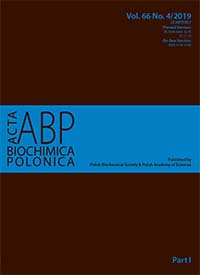Cladonia uncialis as a valuable raw material of biosynthetic compounds against clinical strains of bacteria and fungi
Abstract
Cladonia uncialis is a lichen species with confirmed antibacterial activity and whose genome has been recently sequenced, enabling first attempts in its functional characterization. In this work, we investigated activity of the C. uncialis acetone extract (CUE) and usnic acid (UA) enantiomers against ten clinical microbial strains causing skin infections. The results showed that CUE, containing (–)-UA and squamatic acid, assayed at the same concentrations as UA, was noticeably more active than (–)-UA alone, in its pure form. The studied CUE displayed an activity that was comparable to that of (+)-UA observed for Staphylococcus epidermidis and Enterococcus faecium (18-24 mm zone of growth inhibition), but did not display any activity against fungal strains. The CUE demonstrated low cytotoxicity against HaCaT cells, in comparison to UA enantiomers, which is important for its therapeutic use. Results of the antioxidant assay (DPPH) indicated low antioxidant activity (IC50>200 µg/mL) of CUE, while the total phenolic content was 70.36 mg Gallic Acid Equivalent/g of the dry extract.
Acta Biochimica Polonica is an OpenAccess quarterly and publishes four issues a year. All contents are distributed under the Creative Commons Attribution-ShareAlike 4.0 International (CC BY 4.0) license. Everybody may use the content following terms: Attribution — You must give appropriate credit, provide a link to the license, and indicate if changes were made. You may do so in any reasonable manner, but not in any way that suggests the licensor endorses you or your use.
Copyright for all published papers © stays with the authors.
Copyright for the journal: © Polish Biochemical Society.


